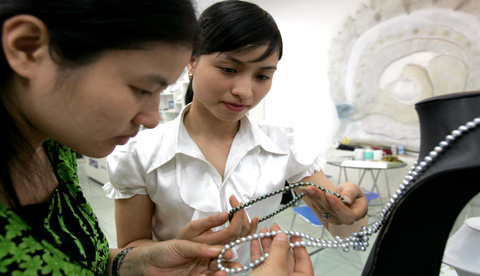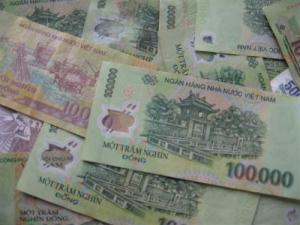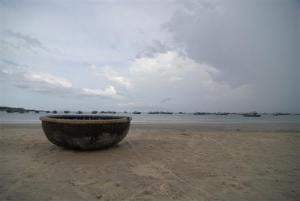Vietnam Pearls: An Ocean of Potential and Possibilities

Having a long coastline has its many advantages, and one of it is having pearls as a primary resource. Vietnam is blessed enough to enjoy these natural blessings.
According to history, the art of raising oysters to produce pearls began in Vietnam in 1967, particularly on Co Tu Island in Quang Ninh. The business stopped though in 1980. It came back again in 1988 and in order for the industry to last and thrive, the aquaculture sector in the Northern part of the country conducted more and intensive studies on how to breed oysters and even ways of implanting beads into them.
Vietnamese pearls were first found in Bai Tu Long National Park in Quang Ninh sea. From the Northern province of Quang Ninh to the Southern province of Kien Giang, four main kinds of oysters have been found to produce pearls: P. fucata martensii which produces Akoya pearls; P. penguin; P. margaritifera which produces black Tahiti pearls; and the P. maxima which produces golden South Sea pearls. Vietnamese pearls used to be very famous and were the pride of the local people that many islands were named after it: Minh Chau (Bright Pearl) or Ngoc Vung (Luminous Pearl).
But the potential of this natural resource has not not been completely tapped. Oysters used to be harvested in nature and raised in small, traditional farms. Developing a legitimate pearl industry, much more establishing a Vietnamese brand for the product, back then seemed to be only a dream, if not an impossibility. Today though, the business has come a long way and currently, there are 11 enterprises studying, breeding and producing pearl jewelry all over the country. Modern technology is now used, producing 70-80 kilograms of pearls annually.
Vietnam Pearl Joint-stock Company and the Hoang Gia Pearl Company are two of the biggest pearl pearl manufacturers in Vietnam today. They hold about 80 percent of the domestic market share. The rest are small enterprises producing pearls mainly for tourism purposes. Hoang Gia Pearl Company was established by Ho Thanh Tuan. He was one of the participants of a major project in Vietnam thirteen years ago when a group of French specialists arrived at the country to study and initiate an oyster-raising endeavor for pearl production in certain coastal areas. Tuan has such passion and hardwork for the industry that he is able to bring in more than one million black, silver, or golden pearls to the mainland every year. He spent six years on Con Dau Island because according to him, unlike the other areas, the waters of Con Dau is especially suitable for many types of oysters. Golden oysters are said to be the most valuable kind.
Pearl farming depends mostly on the following factors: environment of the sea; salinity; and water depth. Under the right conditions, it takes at least five years before an oyster becomes mature enough to produce a pearl, and the success rate is about 40 percent. For pearls more than 10 millimeters, it could even take from seven to ten years.
Le Nam Trung is the current general director of Halong Pearl Joint Stock Company. He is one of the first Vietnamese experts to receive professional pearl training in Japan. The company is based in Quang Ninh and is involved in the manufacture of pearl jewelry. At present, the company is aiming to promote and trade pearl products. Trung believes that the country's natural conditions, their technique and the increasing number of workers all combined make up for a successful pearl industry, even creating an international brand.
In order to establish a global brand of pearls in the country, Tuan invented and succeeded in an engraving process of decorative patterns of a bronze drum into the pearl, implanting it into the oyster and raising them for another year. The drum is a Vietnamese cultural icon and the result is a one-of-a-kind pearl symbolizing Vietnamese tradition. Tuan's love for pearls is so exceptional that he even went so far as to creating pearls by transplanting teeth into the oysters.
Though the demand for pearls in Vietnam is rising, the lack of a coordinated plan is a constant struggle. Despite the given suitable natural conditions for pearl farming, the industry in the country is still inferior compared to that in developed countries in terms of both quality and quantity. There is an apparent need to improve both aspects in the pearl industry in Vietnam. Thus, the long term goal is not just simply creating crude products, but to actually establish a unique Vietnamese brand of pearl. Aside from aiming to expand the business all over the country, there is a vision of reaching the international market such as in Switzerland, Dubai, and Japan, the latter being the biggest pearl market in the world.
One way of expanding the pearl industry of Vietnam into the global market is to expand the model of running tours to pearl raising villages in Ha Long Bay to other branches of the company in Nha Trang and Phu Quoc. Pearls sell from hundreds to thousands of dollars in both the domestic and foreign market. But if Vietnam can also penetrate through the new market strategy of development and trading of pearl jewelry for domestic market, add it up to its existing production of pearls for exports, the country has not only a good but excellent potential and chances of developing its pearl industry into a giant global company, carrying its own brand of Vietnamese tradition and culture for the whole world to see.









